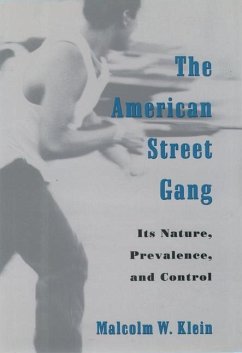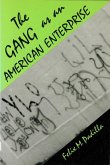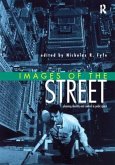This book reviews what has been known about gangs, and updates that information into the 1990s. It covers reported changes in the structure and crime patterns of gangs, their age, ethnic, and gender characteristics, and their spread into almost all corners of the nation. It also reviews and updates the situation in other countries to determine how unique the American gang really is.
When the Soviet Union collapsed, the White House announced with great fanfare that 100 FBI counterintelligence agents would be reassigned. Their new target: street gangs. Americans--filled with fear of crack-dealing gangs--cheered the decision, as did many big-city police departments. But this highly publicized move could be an experience in futility, suggests Malcolm Klein: for one thing, most street gangs have little to do with the drug trade. The American Street Gang provides the finest portrait of this subject ever produced--a detailed accounting, through statistics, interviews, and personal experience, of what street gangs are, how they have changed, their involvement in drug sales, and why we have not been able to stop them. Klein has been studying street gangs for more than thirty years, and he brings a sophisticated understanding of the problem to bear in this often surprising book. In contrast to the image of rigid organization and military-style leadership we see in the press, he writes, street gangs are usually loose bodies of associates, with informal and multiple leadership. Street gangs, he makes clear, are quite distinct from drug gangs--though they may share individual members. In a drug-selling operation tight discipline is required--the members are more like employees--whereas street gangs are held together by affiliation and common rivalries, with far less discipline. With statistics and revealing anecdotes, Klein offers a strong critique of the approach of many law enforcement agencies, which have demonized street gangs while ignoring the fact that they are the worst possible bodies for running disciplined criminal operations--let alone colonizingother cities. On the other hand, he shows that street gangs do spur criminal activity, and he demonstrates the shocking rise in gang homicides and the proliferation of gangs across America. Ironically, he writes, the liberal approach to gangs advocated by many (assigning
Hinweis: Dieser Artikel kann nur an eine deutsche Lieferadresse ausgeliefert werden.
When the Soviet Union collapsed, the White House announced with great fanfare that 100 FBI counterintelligence agents would be reassigned. Their new target: street gangs. Americans--filled with fear of crack-dealing gangs--cheered the decision, as did many big-city police departments. But this highly publicized move could be an experience in futility, suggests Malcolm Klein: for one thing, most street gangs have little to do with the drug trade. The American Street Gang provides the finest portrait of this subject ever produced--a detailed accounting, through statistics, interviews, and personal experience, of what street gangs are, how they have changed, their involvement in drug sales, and why we have not been able to stop them. Klein has been studying street gangs for more than thirty years, and he brings a sophisticated understanding of the problem to bear in this often surprising book. In contrast to the image of rigid organization and military-style leadership we see in the press, he writes, street gangs are usually loose bodies of associates, with informal and multiple leadership. Street gangs, he makes clear, are quite distinct from drug gangs--though they may share individual members. In a drug-selling operation tight discipline is required--the members are more like employees--whereas street gangs are held together by affiliation and common rivalries, with far less discipline. With statistics and revealing anecdotes, Klein offers a strong critique of the approach of many law enforcement agencies, which have demonized street gangs while ignoring the fact that they are the worst possible bodies for running disciplined criminal operations--let alone colonizingother cities. On the other hand, he shows that street gangs do spur criminal activity, and he demonstrates the shocking rise in gang homicides and the proliferation of gangs across America. Ironically, he writes, the liberal approach to gangs advocated by many (assigning
Hinweis: Dieser Artikel kann nur an eine deutsche Lieferadresse ausgeliefert werden.








